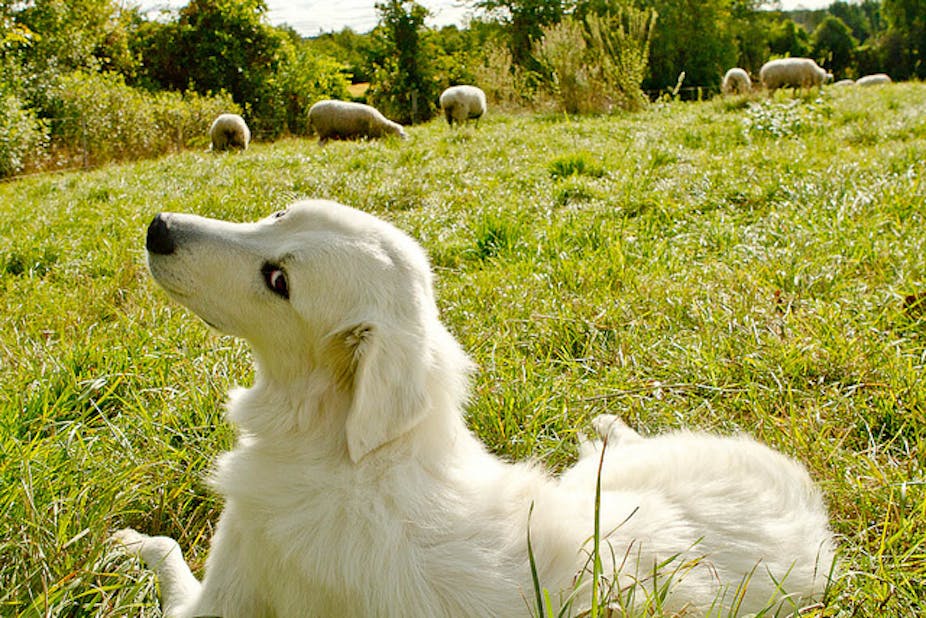True innovation is rare in agriculture. Most farmers are willing to improve the way they work, but these improvements are typically small adjustments to established practice, rather than fundamental changes in direction.
But farmers throughout Australia have recently begun experimenting with a radical new solution to one of their biggest problems: attacks on livestock by wild predators, mainly dingoes, other wild dogs and foxes. This is the most significant threat faced by many sheep, goat and free-range poultry farmers, and is a major headache for cattle farmers.
The conventional response is to try to kill as many of the predators as possible, usually by distributing baits laced with 1080 poison. This happens on an industrial scale over vast areas of Australia, but many farmers are complaining that the predator problem is just getting worse.
The innovation is to use guardian animals, like dogs, alpacas or donkeys. Dogs are the most radical option, because farmers who use them have to stop spreading poison on their farms. The dogs belong to ancient breeds like the Maremma sheepdog that have been protecting livestock for thousands of years.

They are prepared for their work by living with livestock from puppyhood, so that they bond to them rather than to people or other dogs. Because they go through their social development with livestock as their closest companions, they grow into adults who choose to live with “their” livestock and provide full-time care and protection. They do this using complex behaviour and independent decision-making. For example, they may bring the animals into yards to keep them safe during nights when packs of wild dogs invade the farm, and at other times keep watch over injured or distressed animals until the farmer can find and help them.
For these reasons, they provide a more complete solution than other guardian animals like alpacas, which are effective only because they are aggressive to predators and provide indirect protection for sheep or goats when placed in the same paddocks with them.
For the last three years, my PhD student Linda van Bommel and I have been researching the use of guardian dogs in Australian livestock industries. Our first question was: do they actually work? After interviewing more than a hundred livestock producers who use guardian dogs and visiting a series of farms for in-depth study, we found the answer. They work superbly.
Almost all farmers reported that predation dropped after they introduced guardian dogs, and in most cases it stopped completely. This was true even on very large properties of many thousands of hectares, with high dingo populations. Many farmers said that their dogs made the difference between viability and ruin for their businesses. We did a benefit-cost analysis showing that the dogs paid back their purchase and maintenance costs within a year or two.
So, the figures show that using guardian dogs is a good business decision for Australian farmers with a predator problem. The stories that individual farmers tell of their success make that obvious. But in my own conversations with farmers who use guardian dogs, I notice something else about them, something quite unusual. They are happy. Not just pleased that they have one less problem on the farm; they seem more deeply satisfied with farming life in general.
I suspect the reason for this is that farmers love working with animals, and guardian dogs provide them with a way to use animals to solve one of their biggest problems. This gives deeper satisfaction than crude technical fixes like poison could do, even if they worked.
There are lots of good things to say about this particular innovation. Because it reduces use of poison, it is clean and green. It means less animal suffering, so it is ethical. And once guardian dogs are established on a farm, they continue to work with minimal input, so it is sustainable. But maybe its most important value is that it enriches the connectedness of people and animals, and improves the lives of both.
If you would like to know more, you can download a free guide to using guardian dogs, written by Linda van Bommel.

